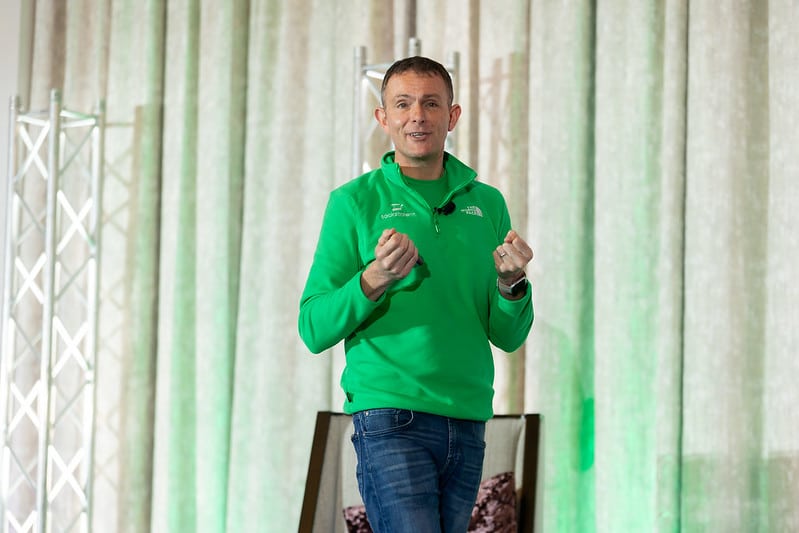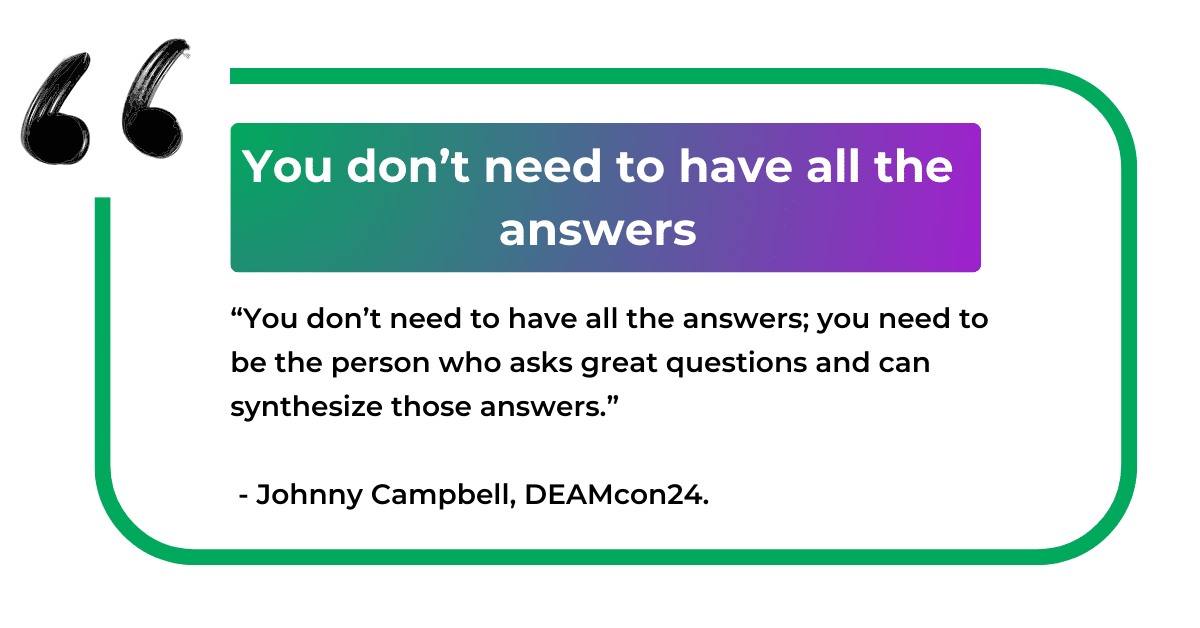Note: This article is based on a talk SocialTalent CEO Johnny Campbell gave at DEAMcon24. You can find the full and original piece here.
The need for truly equitable and inclusive work cultures has never been more apparent. Organizations are a melting pot of so much difference and intersectionality, but we seem to consistently struggle when it comes to moving the needle to accommodate, leverage, and celebrate people from underrepresented backgrounds. And it’s a huge shame – both from the lens of humanity and business success.
So, what can be done to improve this status quo? To foster an inclusive workplace environment, one of the most powerful things we need to do is broaden our DEI lens beyond just race and gender as the only stalwarts of this mission. Instead, we have to embrace the multitude of other differences, including disability, neurodiversity, age/generation, sexual orientation, refugee status, veteran status, former incarceration, and faith. And it’s through the power of empathy and understanding that we can celebrate these differences and cultivate a more accepting organizational culture for all.
Let’s dig into Johnny’s presentation.

Focusing on Just Race or Gender Tends to be Polarizing
In the United States, Western Europe, and Africa, race and gender tend to be the top areas of DEI focus, Johnny reported. However, in the Middle East or Eastern Europe, their number one issue is age or generational differences, while in South America the top DEI priority is disabilities.
While “gender and race are extremely important topics to prioritize,” focusing on those topics alone leads to an “Us versus Them” mentality, he said. Gender and race by definition are typically quite polarizing, he explained, noting that many people look at DEI efforts as “something for other people” and not about them. Johnny stated that there is less DEI pullback outside of the United States “because as you move outside the U.S., you tend to see more focus on a broader range of differences.”
A More Holistic Approach to DEI Brings More People In
“What you want to try to do is break down those barriers,” Johnny stated. “You want to make sure that most people are seeing the employee base as a large ‘Us’”.
So, how can you turn “Thems” into “Us-es”?
“When your DEI efforts are not just about one or two issues … [y]ou tend to find nearly everybody in the organization is included in one of those differences and the intersectionality is likely to mean they are included in many of them,” he noted.
For example, “[w]hile you may be a white male like me, you might have a disability. You might be neurodivergent. You might look to try to protect your faith within that organization. You might be conscious of your age differences in the organization.”
“It’s much easier to be an “Us” when you have a broader definition of DEI in your organization and we see this across the world,” Johnny said.
While building on using a broader focus, “it’s also really important to try to take someone else’s perspective,” he advised. “We do this by individuating somebody. When we see somebody who, apparently, has an immediate difference, it is much easier to make them an ‘Us’” when we consider points in common,” he explained.
Examples of such points may include:
- Do they like the same pets?
- Do they love their kids?
- Do they have a sick parent as you do?
- Do they enjoy the same foods, entertainment, or hobbies?
When we individuate people, “we bond with them a lot more,” Johnny said. Accordingly, giving people enough contact with each other to individuate, turns “Thems” into “Us-es.”
In contrast, “trying to change “Thems” into “Us-es” by using rational arguments does not work,” he noted. “You tend to find the opposite happens. People become more polarized. They become more firm in their differences and opinions of difference as well.”

Empathy Is the Bedrock
A lot of this work is challenging in situations where an organization does not have a very diverse workforce, Johnny pointed out. This is where empathy comes in. “We are trying to build empathy and understanding in an effort to individuate everybody else in the organization that might be considered [a] ‘Them’ to somebody and try to make that person see ‘Them’ as ‘Us.’”
Storytelling Is How You Develop Empathy: Ideas Stick to Stories
“Emotional stimulation is the foundation for empathy,” Johnny continued, and we stimulate emotions through effective storytelling. Good storytelling releases a chemical in the body that renders a person more likely to feel empathy and understanding for somebody else, he said. “That is critical to develop more inclusion in our organizations. More understanding of other people in the organization and their challenges, their differences, advantages, and benefits to working together.”
To illustrate this point, he shared a video his friend Lucy Sheen made in 2020 to address common misconceptions in the United Kingdom surrounding the causes of COVID-19:
“Something like that is much more powerful than reading about statistics, reading educational material, or reading about my unconscious bias,” Johnny stated. “Facts don’t really change people’s minds … The power is trying to tap into human emotion, to tap into empathy as the foundation and how to change people’s minds and how to get them to work together.”
“We are hardwired to remember stories, not facts,” he added later in the presentation.
You MUST Put the Policies and Processes in Place, Otherwise Awareness Is Not Enough
Johnny shared a graphic slide depicting empathy as the bedrock, then policies and processes as the soil, and practices at the top, represented by growing grass. “It’s no good saying that we support X person’s rights when your actual policies do not support them,” Johnny cautioned.
Putting policies and processes in place is essential. “Otherwise, awareness just is not enough,” he said. “It’s not the sexy part but you’ve got to make sure the policies match what you’re trying to do on the other side.”
A lot of organizations get in trouble because they jump to practices without establishing the foundation of empathy and policies and processes, he noted. Having all three levels in place is “changing the cultural fabric” of an organization, he said.
Educate Your Workforce on The Practices That Strengthen Inclusion
“Most people want to do this [DEI]. They want to do right,” Johnny said. “If you create empathy and understanding and begin to bring in policies, people want to know what to do.” However, “they are terrified to ask you how to do it. Particularly if you have some sort of job title that includes DEI because you are the police to them. They are terrified of your judgment because they acknowledge to themselves privately they are ignorant as to what to do.” Without education, people will tend to “put [their] head in the sand and move on.”
Support Through Year-Long Storytelling That Leverages Empathy
Organizations can support their efforts through year-long storytelling that leverages empathy by looking for events and opportunities that happen throughout the year to support various diverse communities.
“You don’t need to have all the answers; you need to be the person who asks great questions and can synthesize those answers,” Johnny said.
Note: This article is based on a talk SocialTalent CEO Johnny Campbell gave at DEAMcon24. You can find the full and original piece here.
Learn more about SocialTalent’s DEI Training – or contact our team to see how we can help you create a more equitable and inclusive workplace.
The post Going Beyond Race and Gender to Create a More Equitable, Inclusive Culture, with Johnny Campbell appeared first on SocialTalent.